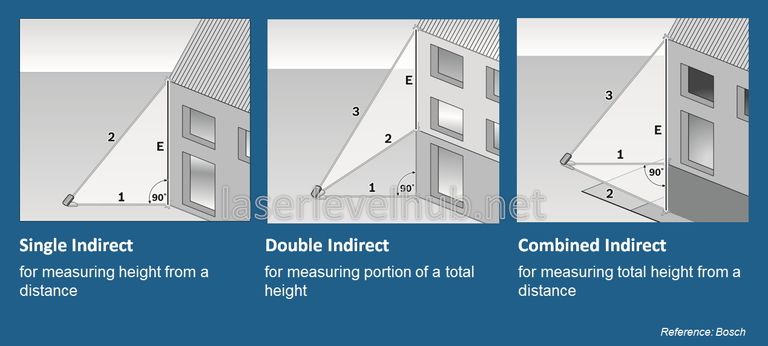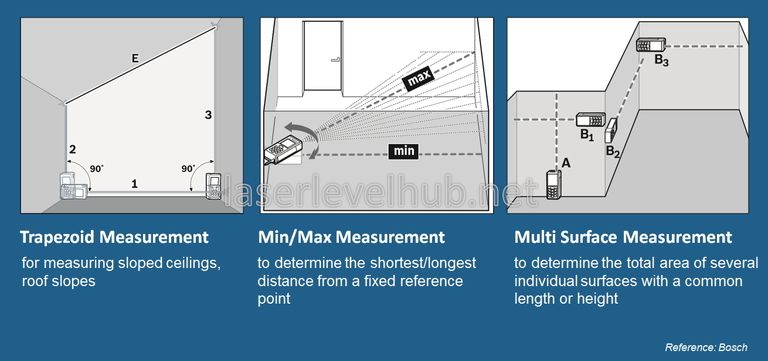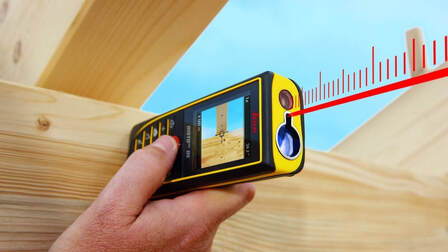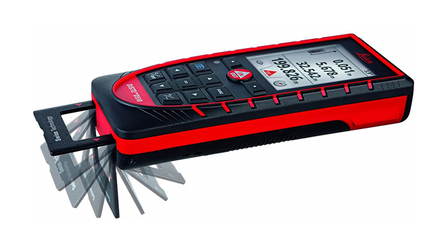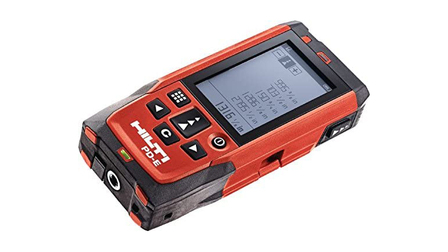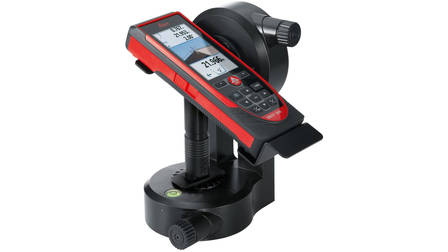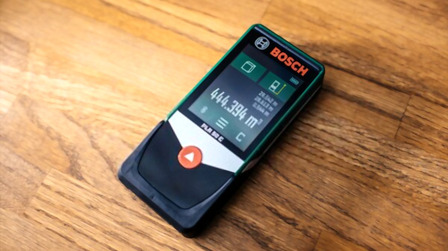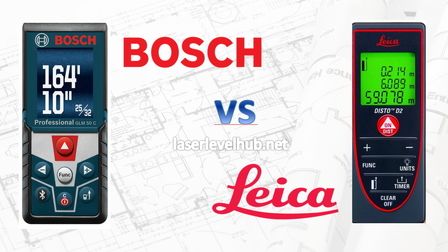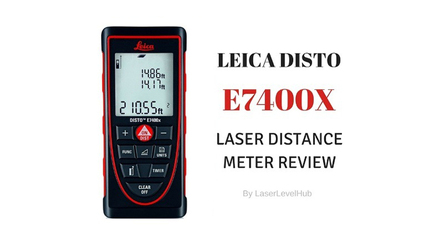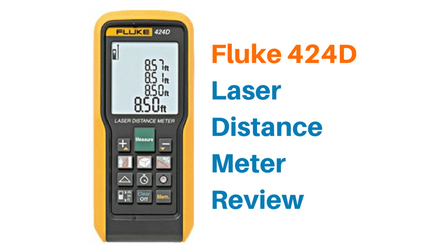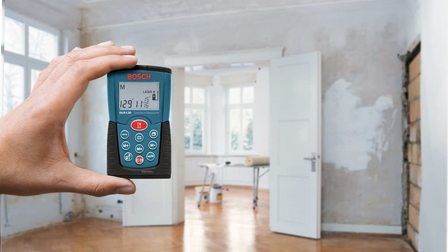A laser tape measure (also called laser distance measurer) is a machine that uses a laser to measure distances.
For the professional contractor or serious home improvement hobbyist, this tool is a huge improvement over a traditional tape measure.
The laser technology provides you an extremely accurate distance instantly, thus saving you time and improving the quality of your work.
It also allows you take any measurement you need by yourself, while traditional tape measures require two people to keep the measure level when used over large distances.
Learn more about this versatile tool with below infographic:

How Does A Laser Tape Measure Work?
A laser tape measure uses a laser beam to determine the distance to a certain point.
The most common form of laser tape measure sends a laser pulse toward the object and measures how long the pulse takes to bounce off the target and return to the machine.
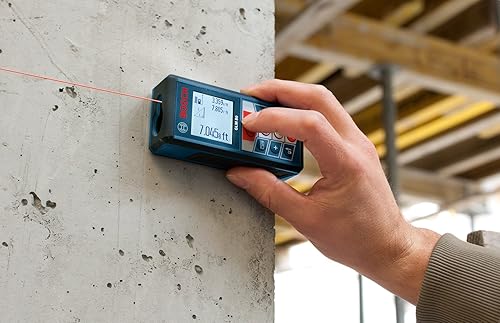
This measurement process is often called the “optical measurement process” and can be displayed in multiple units of measure.
Who Needs A Laser Tape Measure?
A laser tape measure would be useful to anyone working on a construction or remodeling project, both professional and amateur, such as contractors, electricians, carpentry, masonry, interior designers, homeowners etc.
Quickly find the area of a wall so you know how much paint to buy, or the correct angle on which to construct a roof.
It would also be a great tool for real estate appraisers, as they could measure a property’s dimensions with a couple clicks of a button instead of using huge tape wheel or other manual measuring tools.
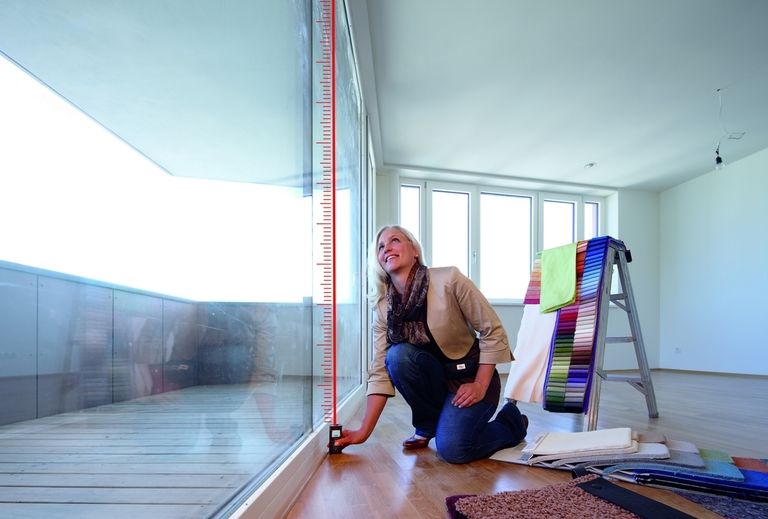
How To Choose The Best Laser Tape Measure?
If you often have to complete these tasks with conventional tape measures or find yourself constantly completing these calculations by hand, then a laser tape measure may make your work more efficient and your life easier.
In order to choose the right model for your project's need, there are several factors to consider before making the decision.
#1 - Measuring Range
The range you need depends on how you will use your laser tape measure.
- Amateurs working on small home improvement projects don’t need ranges past 100 feet, while the average professional contractor or real estate appraiser should be good with a range of 100 feet to 300 feet.
- Those working on huge job sites, like industrial construction, road construction or surveyors dealing with large tracts of land need models with 300+ feet of range.
However, there are more factors that determine range than simply how powerful the machine is.
For example, the maximum range listed on any model will refer to what is possible when the laser is used with a reflective target, which is sold as cheap accessories by the manufacturers.
Without a reflective target, the range will then depend on the following factors:
- The amount of light (the darker the better)
- The surface the laser is being pointed at (smooth textures and lighter colors tend to work better)
- How clean the area covering the laser is (it's best to treat your laser like you would with an expensive camera lens)
You will also increase your range by holding the laser measure as steady as possible when aiming it at the target.
#2 - Accuracy
The cheapest models are often only accurate to 1/4 of an inch, which is fine for general area calculations, like determining how much of a wall needs to be painted or how long a fence needs to be.
For most construction or landscaping work, it is a good idea to have the accuracy to 1/16 of an inch, while more technically demanding tasks demand accuracy to 1/32 of an inch.
#3 - Measurement Units
Virtually all models come equipped with the ability to measure in some popular measurement units (inches, feet, decimal feet, metric units...) and many laser measure can toggle between units easily.
However, depending on your preferences, it may make more sense to consider carefully and buy a version that displays the units you want to avoid potential confusion.
See also:Best Electric Testers For Measuring Current
#4 - Laser Measure Functions & When To Use
The fact is that you may not need a laser distance measure with all complicated functions if you only work on small home remodeling projects.
On the contrary, a professional working at large construction site on a daily basis may require a model with more high-end functions.
Therefore, understand various functions of a laser measure will help you determine which functions can help to complete your job.
Read more about the various functions below to choose the best laser tape measures:
#5 - Back-lit Display Or Not?
A back-lit display makes the screen easier to see in bright glare than conventional screens, while also being easy to see in low light.
Not all models come with the feature, so if you find yourself using your laser often in these situations then it's worth having a laser tape measure with back-lit display.

#6 - Memory/Historical Data
Having a model with a large amount of memory is key for complex jobs with lots of measurements, but is not an issue for small jobs.
#7 - Battery life
Most models need to have their batteries recharged or replaced every two to four hours, meaning spare batteries and/or portable chargers are essential.
See also:Best laser tape measure reviews
Conclusion
The best thing about laser tape measures is their ability to perform many different tasks, so that simply calling these machines “laser tape measures” is a bit of a misnomer.
“Laser measuring and calculating device" would be a more precise term, as they not only measure but use those measurements to make complex calculations instantly.
No more scribbling out equations on your notepad- simply make the measurements and let the machine do the rest.
If you have some technology resistant friends who ridicule relying on machines for things older generations had to do themselves, let them talk while you work quicker and more accurately thanks to your laser tape measure.
Let your results do your talking for you.
